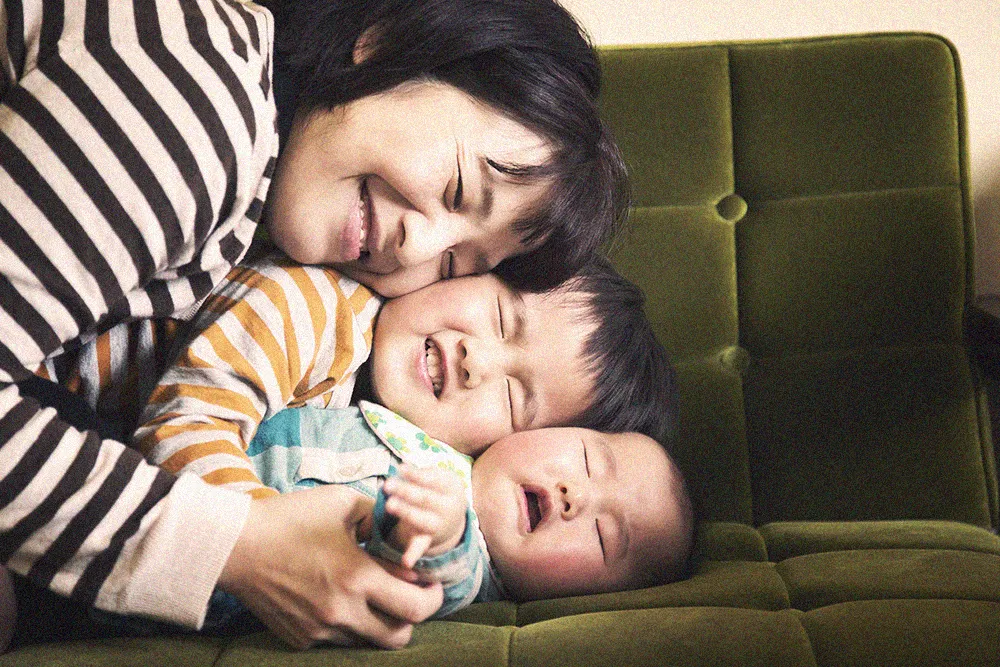Should parents save children’s cord blood?
Once-in-a-lifetime Opportunity
Precious Gift of Children
Cord blood is rich of Hematopoietic Stem Cells
A lifelong guard insurance for children himself and family
Most Asked Questions by Parent
Questions asked by parent when considering the cord blood banking.
Download Cord Blood & Cord Lining Leaflet
Keep staying with us to explore the powerful stem cells
Latest Promotions & Offers
Exclusive offers for client enrol HealthBaby service today!
Most Asked Questions by Parents
Cord blood has significant medical value and be used widely in transplant medicine. Also, cord blood is regarded as “The First Gift” from God to a baby. Collecting cord blood is a once-in-a-lifetime opportunity at the time of delivery.
In 1988, a 5-year-old French boy suffering from Fanconi’s Anemia successfully received transplantation of his younger sister’s cord blood, which was the first clinical application of cord blood and aroused worldwide enthusiasm about cord blood storage. At present, up to 113 diseases5,6 including cancers, blood-related, immunity and metabolic disorders can be treated by cord blood.
Cord blood has signi cant medical value and be used widely in transplant medicine. Cord blood is also regarded as ” The First Gift” from God to a baby. Collecting cord blood is a once-in-a-lifetime opportunity at the time of delivery.
- Pure: Less polluted by radiation, viruses and medicines
- Regenerative: High regenerative power
- Easily Available: Obtain from placenta and umbilical cord, no medical risk to mother and infant
- Ready-to-use: Immediately usable after thawed, no searching time is needed
- Low Rejection: The recipient is at lower risk of complications by cord blood transplant, no rejection for own use and low rejection when donating to others
- Easier to Match: No need to be perfect matched
- Lower Cost for Collection: Cord blood belongs to the target customer, therefore no need to spend a huge amount of money for searching and purchasing
Details of banking cord blood please refer to Why Storing Cord Blood.
Cord blood and umbilical blood contain two different stem cells which are widely adopted in different medical aspects. Cord blood is a rich source of HSCs which can create the blood and immune cells. Cancers, blood-related, immunity and metabolic diseases can be treated by cord blood. Umbilical cord is a rich source of MSCs which can create structural and connective tissues. Apart from minimizing GvHD in directed and unrelated allogeneic cord blood transplants, MSCs can potentially apply to chronic illnesses treatment, regenerative medicines as well as organ and tissue engineering. Since cord blood and umbilical cord are rich sources of different types of stem cells, they may help to repair the body in different ways.
Until today, up to 113 diseases had been treated with cord blood transplants5,6. They could be divided into 7 categories, namely: Leukemia , Lymphomas, other Disorders of Blood Cell Proliferation, Inherited Disorders of Immune System, Inherited Metabolic Disorders, other Cancers and others.
Detail about 113 treatable disease please refer to Diseases Treated by Cord Blood Transplantation.
Entrusted by most parents in Hong Kong1, Healthbaby has a very comprehensive service coverage. Apart from the traditional liquid nitrogen storage plan, HealthBaby also pioneered to provide the advanced BioArchive® System. All storage plan of HealthBaby adopts the expensive liquid nitrogen as storage medium to provide the most stable tempertature for stem cell viability, providing the most quality umbilical cord and cord blood storage service.
To cater for different needs of clients, HealthBaby’s cord blood and umbilical cord storage plan have very flexible and comprehensive service plan. Regarding cord blood plan, clients could select the storage plan base on the storage and processing system needs.
The umbilical cord and cord blood service fee already includes registration fee, processing fee and 18 years storage fee, no any additional charge during the contracted year. Extra discounted would be provided for registering both umbilical cord and cord blood storage plan. HealthBaby existing customers and other cord blood bank customers could also enjoy special offers. Please contact us for deatils and any enquiries.
For more details of cord blood service plan please refer to Service Plan.
Storing Cord Blood To Provide Life- long Family’s Health
Storing every child’s cord blood could provide the biggest guard to every child:
- Every child’s stem cell is unique. Although cord blood could treat 113 diseases5,6, some inherited diseases could not be treated by own cord blood. In this respect, siblings’ (with consanguinity) cord blood is the most possible source to treat the diseases,.
Cord blood transplants are classified into three types: autologous, sibling, and allogeneic transplants:
- Autologous Transplant: The cord blood is from the child him/herself, providing a 100% match in HLA (human leukocyte antigen) typing. However, if the child’s disease is of a genetic origin, his or her own cord blood cannot be used for treatment.
- Sibling Transplant: If a sibling needs to use the child’s cord blood, an HLA matching test is required, since the cord blood is not from the patient. The likelihood of a successful match is approximately 25%–50%.
- Allogeneic Transplant: This involves using cord blood from an unrelated donor (no family relation).
Cord blood collection is very simple and won’t cause any harm to both mother and baby. Cord blood is collected after baby delivery and the umbilical cord has been clamped and cut, thus it is safe and causes no pain to the mother and baby.
For more details of steps of cord blood collection please refer to Cord Blood Collection Process.
The vast majority of leukemias (also known as blood cancer) and other life-threatening diseases are not inherited, and usually develop without any warning. Therefore, it is not advisable to rely solely on family medical history when deciding whether to store your child’s cord blood.
According to recent statistics, 1 in 200 people will require a stem cell transplant before the age of 704.
As medical science advances, cord blood can now be used to help treat as many as 113 different diseases5,6. The number of successful cord blood transplants worldwide has also grown from just 10,000 cases in 2005 to over 40,000 cases today5. This highlights the broad potential of cord blood applications. Storing your child’s cord blood provides significant security for your child and other family members.
For more information about the benefits of cord blood storage, please visit What is Cord Blood?
At present, cord blood stem cells can be used to treat leukemia, lymphoma and other blood disorders but not inherited diseases. Therefore, may be it is not necessary to store the cord blood of the baby who has an inherited genetic disorder. However, the rate of biomedical technology development is unpredictable; in the future there might be a break through with cord blood stem cells application such as cell therapy, tissue engineering and regenerative medicine. These technologies will be applied in clinical use when they are fully established.
Thus, storing the precious cord blood is still worthwhile.
As of 31 December 2024, our total number of successful cord blood transplants has exceeded 30,000 cases. From January to December 2024 alone, there were 5,097 transplants performed. Successful transplant cases include the treatment of leukemia, lymphoma, solid tumors, autism, and thalassemia.
For more successful transplant case details, please refer to successful cord blood transplant cases.
In fact, both bone marrow and cord blood are sources of hematopoietic stem cells. For allogeneic or sibling transplants, both have similar anti-cancer abilities, but matching is required before transplantation. According to the Hong Kong Red Cross, the chance of finding a perfectly matched unrelated bone marrow donor is just 1 in 5,000 to 10,000. However, cord blood is more compatible and can be used for transplantation without a perfect match; the matching rate among siblings is around 25%–50%, while for the original donor, no matching is needed. As a result, the number of bone marrow transplants has dropped by more than half over the past 20 years, and double cord blood transplants have become a new trend in treatment.
Since public hospitals are facing the medical staff shortage, they are unable to collect umbilical cord at this moment. If expectant parents decide to bank the umbilical cord, it is required to deliver baby at the following private hospitals in order to enjoy HealthBaby service.
Including Canossa Hospital, Hong Kong Adventist Hospital, Hong Kong Baptist Hospital, Hong Kong Sanatorium & Hospital, CUHK Medical Centre, Matilda International Hospital, Gleneagles Hong Kong Hospital, Precious Blood Hospital (Caritas), St. Paul’s Hospital, St. Teresa’s Hospital, Tsuen Wan Adventist Hospital, Union Hosiptal, Conde S. Januario General Hospital and Kiang Wu Hospital.
Every client’s cord blood and umbilical cord usage is not limited to Hong Kong region. HealthBaby can send the cord blood and umbilical cord to overseas region as long it is legal at the destination.
Please contact us for more details.
Cord blood is not limited to treating the child it was collected from! In fact, in our successful transplant cases, cord blood has even been used to treat an 88-year-old patient with acute leukemia. Siblings and parents can also benefit from stored cord blood. With the highest number of successful cord blood transplants in Hong Kong, our bank uses internationally accredited liquid nitrogen storage technology to ensure long-term stem cell viability. Store once, protect your whole family!
For more details on successful cases, please visit Successful Transplant Cases.
When using cord blood for transplantation, it is important to determine the compatibility and matching of HLA (Human Leukocyte Antigen) between the donor and recipient. Cord blood requires a match of only 4 pairs of antigens for transplantation, whereas bone marrow transplants require all 6 pairs to be matched perfectly.
Compared to bone marrow, cord blood has advantages in terms of source availability, collection, lower rejection rates, and fewer side effects.
Ways to Store Cord Blood
There are two ways to store cord blood in Hong Kong, including private storage and public donation.
- Private storage: Storing the cord blood at private cord blood bank for future transplantation use when needed.
- Public donation: Donate the cord blood to public blood bank to help people in need. (Applicable to specific hospitals only)
If neither private storage or public donation is chosen, the cord blood will be discarded as clinical waste.
Not all Hong Kong hospitals can collect cord blood for donation, Hong Kong Red Cross only provides cord blood donation service at Queen Elizabeth Hospital, Kwong Wah Hospital, Prince of Wales Hospital, United Christian Hospital and Pamela Youde Nethersole Eastern Hospital.
For more details of cord blood donation, please refer to Hong Kong Red Cross.
Hong Kong Red Cross will assign the cord blood received to people in need, which means the donor will lose the priority in using it. Once the cord blood is donated to Hong Kong Red Cross, you can not ask for return for any personal reason.
Private storage can ensure the child and his family members are able to use the cord blood when they need it for transplantation promptly.
If you decide to donate the cord blood to Hong Kong Red Cross, you can download the Cord Blood Donation Registration Form at Hong Kong Red Cross website and deliver at the designated hospital.



